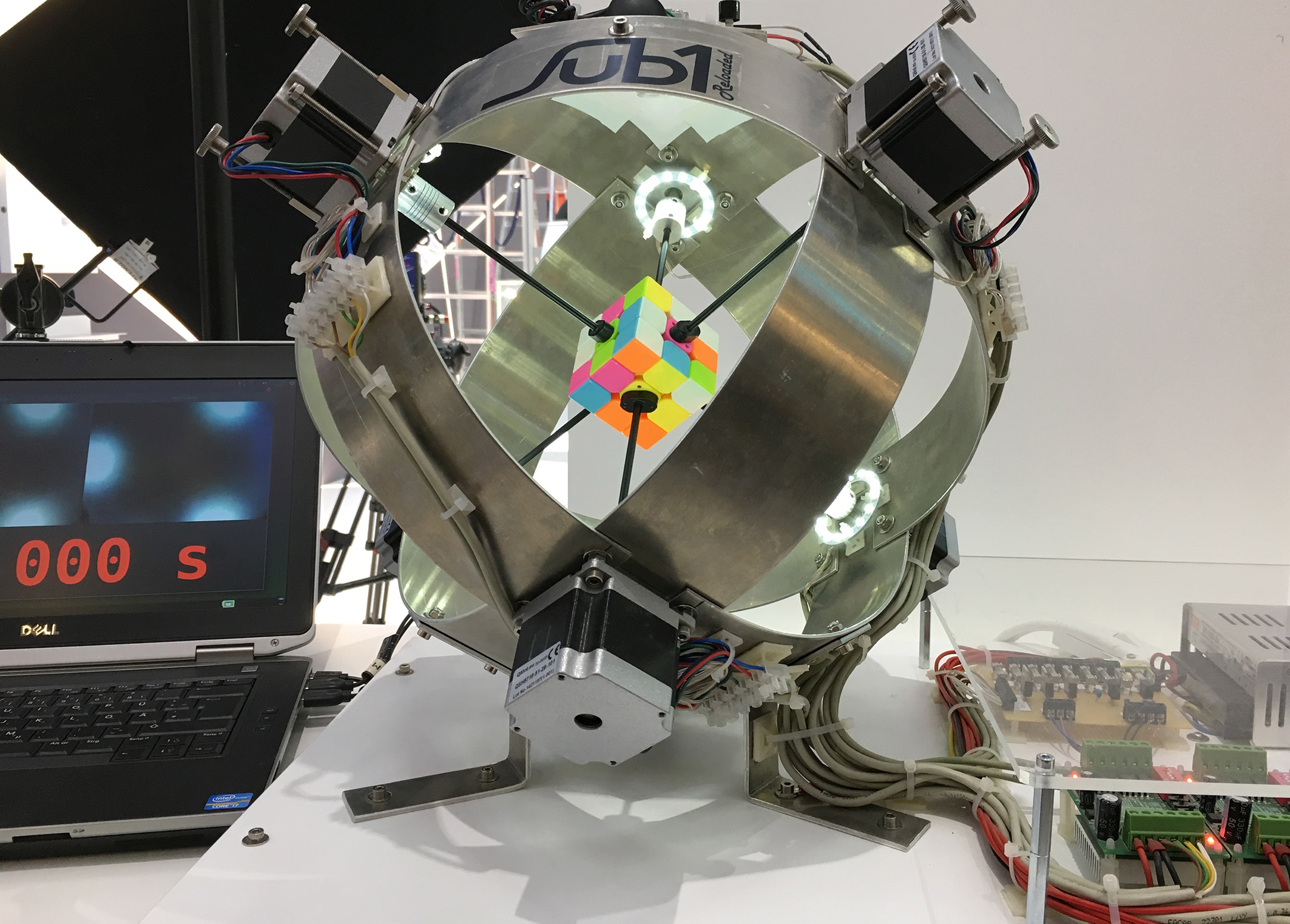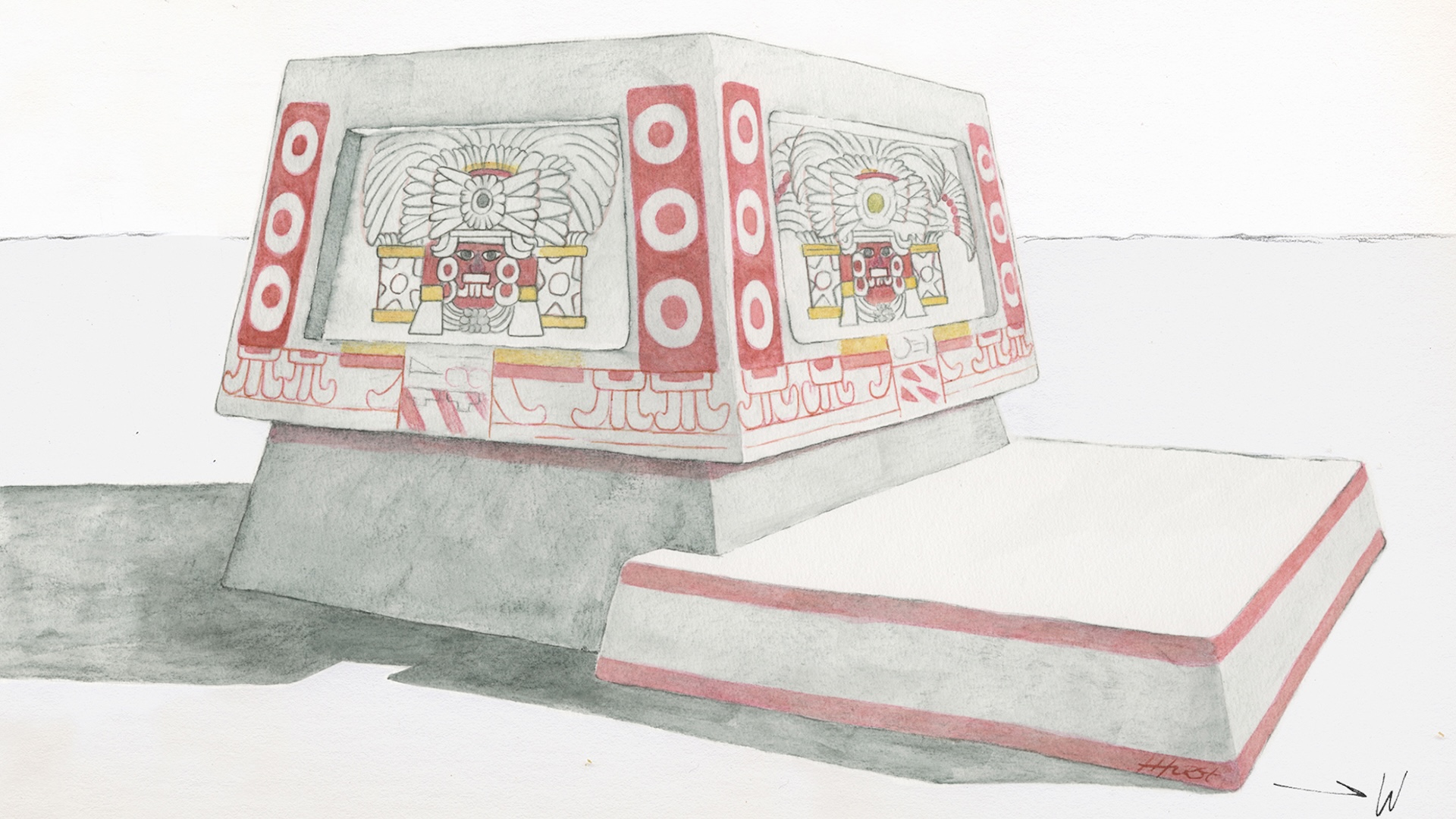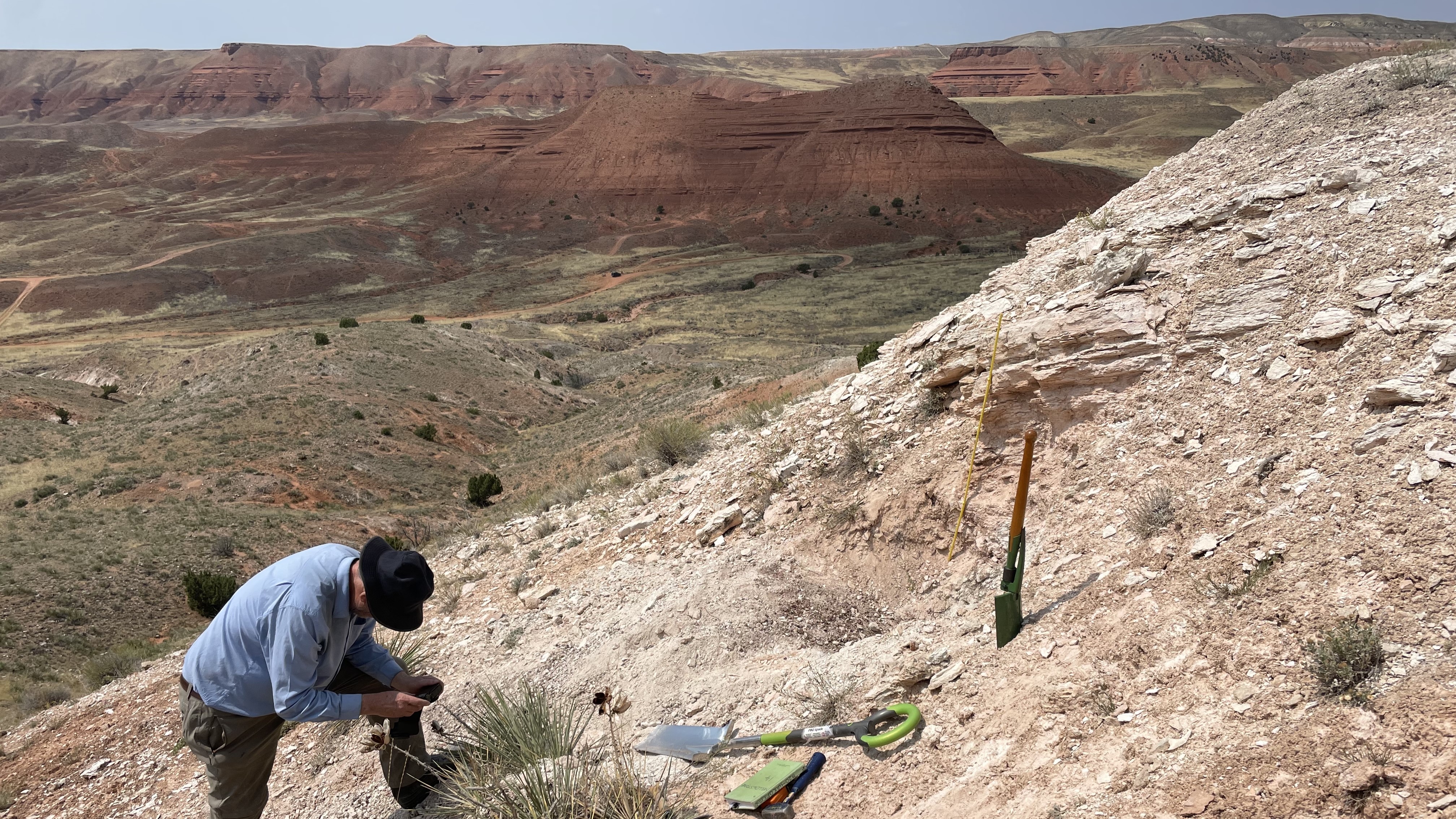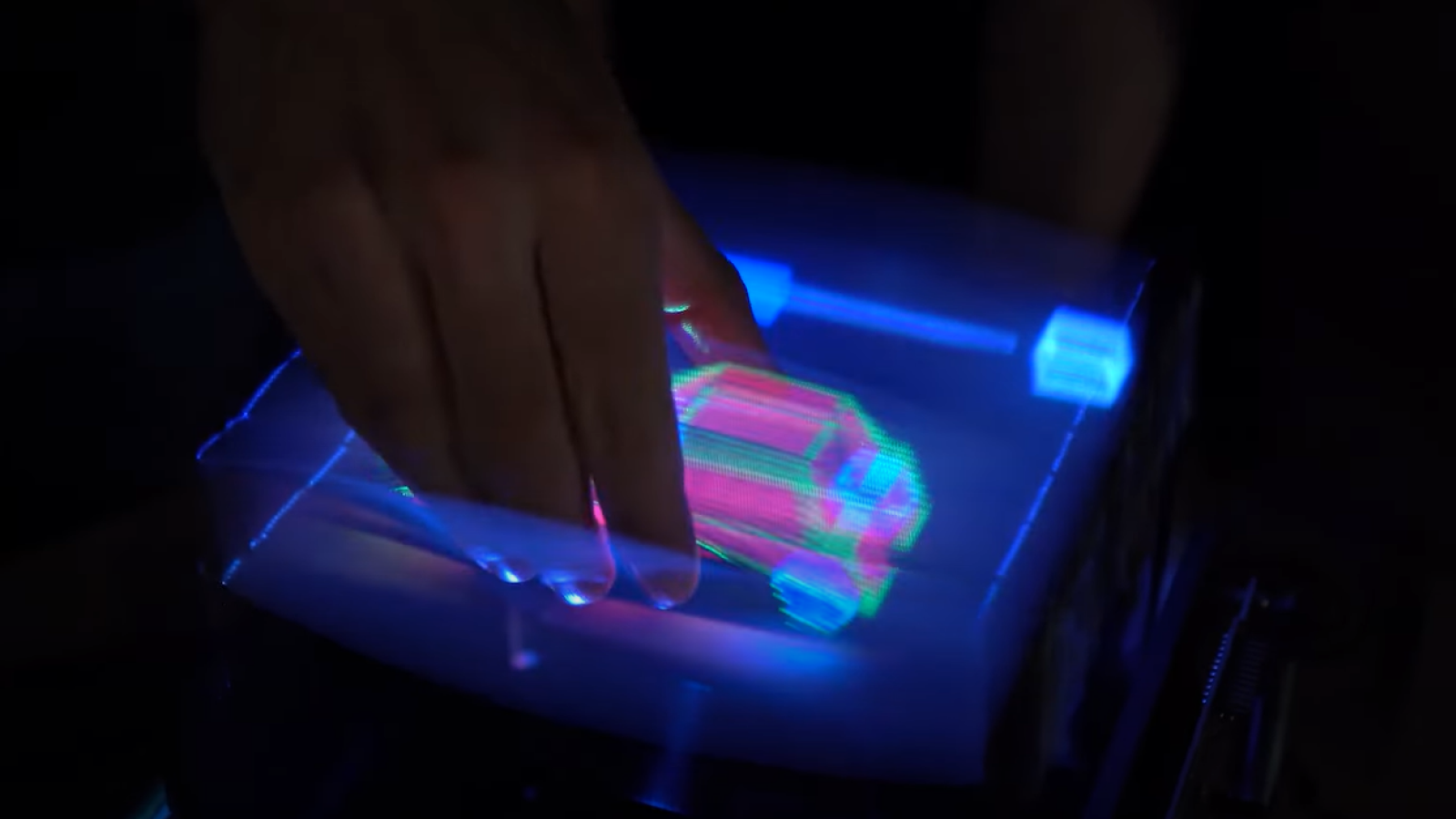New Record! Robot Solves Rubik's Cube in Less Than a Second

Solving a Rubik's Cube is an impressive feat by itself, but now, a robot can do it in record time, cracking the 3D puzzle about 10 times faster than the human who holds the world record.
In just over half of a second (0.637 seconds), the Sub1 Reloaded robot made each side of the Rubik's Cube show a single color. This breaks the previous record of 0.887 seconds achieved by an earlier version of the same machine using a different processor.
German technology company Infineon staged the record attempt at the Electronica trade fair in Munich this week, as a way to highlight its self-driving-car technology. The company provided one of the Sub1 Reloaded robot's microchips. [The 6 Strangest Robots Ever Created]
"It takes tremendous computing power to solve such a highly complex puzzle with a machine," Infineon said in a statement. "In the case of 'Sub1 Reloaded,' the power for motor control was supplied by a microcontroller from Infineon's AURIX™ family, similar to the one used in driver assistance systems."
Infineon said more than 43 quintillion combinations of the Rubik's Cube's colored squares are possible. That same number of cubes would cover Earth in 275 layers, resulting in an approximately 65.6-foot-high (20 meters) layer of Rubik's Cubes, the company added.
The record-breaking attempt began with the press of a button. Sensor cameras on the machine had their shutters removed, and the computer was then able to detect how the cube was scrambled. The computing chip, or the "brain" of the machine as Infineon called it, then determined the fastest solution. Commands to execute the solution were sent to six motor-controlled arms.
While every Rubik's Cube can be unscrambled with just 20 movements, Infineon's engineer Albert Beer did not design the computer to use the fewest moves. Instead, the company said the machine was programmed to achieve the best time, allowing the Sub1 Reloaded to take extra moves to reach its goal.
Sign up for the Live Science daily newsletter now
Get the world’s most fascinating discoveries delivered straight to your inbox.
Original article on Live Science.











